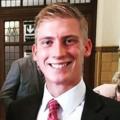AMID the sleek, smooth lines of the many speed machines in the Lakeland Motor Museum’s Campbell Bluebird Exhibition stands a boxy, slightly battered looking Land Rover.
It stands out, somewhat, next to the full-sized replicas of the cars and boats that Sir Malcolm and Donald Campbell used in their quest to break land and water speed records.
But it’s earned its place in the exhibition just like the other vehicles – and it too is finished in the Bluebird Blue colour befitting any vehicle once the property of Donald Campbell.
It’s a 1954 Land Rover Series one with an 86-inch wheelbase.
The old-style logbook records its first registration as October 10, 1954, with its first change of ownership – to Donald Campbell – on January 20, 1960.
Poignantly, the vehicle remained registered to Donald until August 21, 1967, some 8 months after his tragic accident on Coniston Water – when his Bluebird craft crashed as he attempted to break his own World Water Speed Record earlier that year on January 4.
It’s known that throughout Donald’s quest for speed records, he was supported by various Land Rovers – the workhorse of his many record attempt projects.
They were used to hold the equipment used to start his CN7 record car and at least seven Land Rovers were used in his successful 1964 land speed record at Lake Eyre in Australia.
This Land Rover is perhaps one of the slowest vehicles he ever owned, and little is known about its history.
The Series I was most likely bought for its proven reliability.
It has a petrol-engine and unusually for one of Donald’s cars, it is believed this Land Rover retained its original green paintwork while under Donald’s ownership.
Beneath the now blue paintwork, the panels of the Series I are made of Birmabright, a corrosion-resistant alloy.
The Lakeland Motor Museum is researching the Campbell provenance and would welcome any recollection of the Land Rover at Coniston or elsewhere.








Comments: Our rules
We want our comments to be a lively and valuable part of our community - a place where readers can debate and engage with the most important local issues. The ability to comment on our stories is a privilege, not a right, however, and that privilege may be withdrawn if it is abused or misused.
Please report any comments that break our rules.
Read the rules here